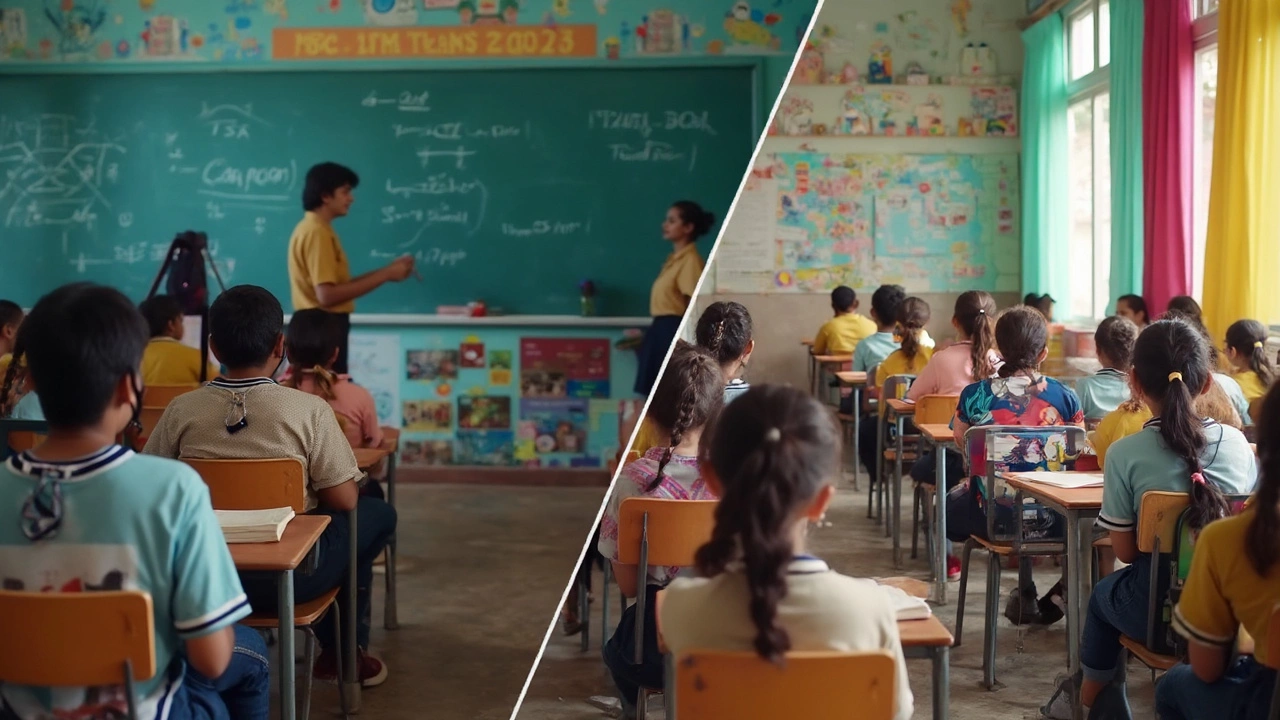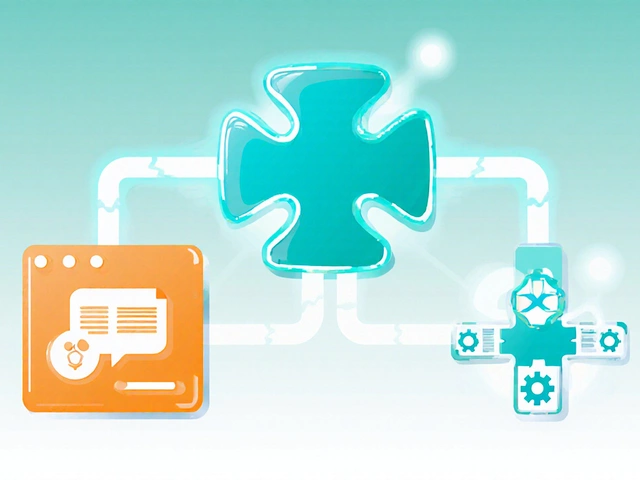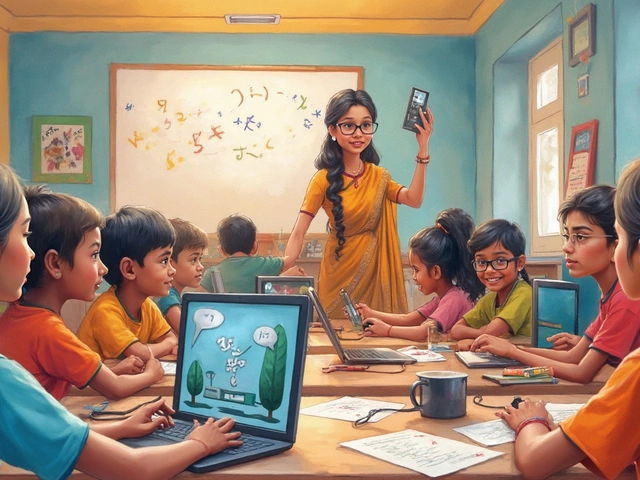
Ask anyone who’s studied under the CBSE system and they’ll probably say, “It’s tough!” But what does that really mean if you’re comparing it to American schools? Are we talking about endless memorization, or is it just a different kind of challenge?
Right away, CBSE and American schools aren’t just two versions of the same thing. While CBSE pushes students to stick to the textbook and ace board exams, American classrooms lean into projects, open-ended questions, and lots of discussion. The result? Two totally different classroom vibes.
It’s easy to get lost in opinions and Internet debates, but here’s a practical truth: you can’t call one system harder without understanding what “hard” even means. Is it the amount of homework? Pressure from teachers? The way tests are set up? Or just the experience of never having enough time to breathe?
If you’re a student moving from one system to the other (or a parent scratching your head at all the school lingo), knowing these differences up front can save you plenty of stress. You’ll be way better prepared if you actually know what’s expected of you and how the whole thing works.
- What Makes CBSE and American Schools So Different?
- Exam Structure: Rote Learning vs. Critical Thinking
- Student Life: Pressure, Homework, and Support
- Tips for Students Switching Between Systems
What Makes CBSE and American Schools So Different?
The biggest thing you notice right away: the CBSE vs American school approach isn’t just about textbooks or teaching styles—it’s everything from what gets taught to how teachers expect students to learn.
CBSE stands for Central Board of Secondary Education. It’s India’s national curriculum for over 20,000 schools. The American system, on the other hand, is actually a mix—each state runs its own show, usually with help from nationwide guidelines like Common Core or Advanced Placement (AP).
The CBSE curriculum is tightly fixed across the country, so a Grade 8 student in Delhi studies pretty much the same stuff as one in Dubai following CBSE. In the US, two neighboring schools can follow different syllabi. That means an American tenth grader in Texas might read completely different books than a class in California.
"CBSE curriculum is uniform across schools and focuses on preparing students for national-level exams. The US system, meanwhile, aims to give room for local flexibility and creative thinking," says Dr. Ramesh Sharma, education consultant and former principal in both systems.
Here’s another big difference: The way each system tests students. CBSE leans hard into board exams at Grade 10 and 12. These exams are everything—they decide a student’s college spot, sometimes even future paychecks. In the US, grades are based on assignments, quizzes, classwork, and finals, so there’s less pressure on just one or two days.
| Aspect | CBSE | American School |
|---|---|---|
| Curriculum | National, fixed | State-based, flexible |
| Assessment | Mainly written board exams, rare projects | Mix of exams, assignments, projects |
| Teaching Style | Mostly lecture and written work | Discussion, projects, interactive lessons |
| Focus | Theory, exams, memorization | Application, creativity, critical thinking |
This isn’t all just theory. About 30% of Indian students say board exams are the most stressful part of school, while in the U.S., more than half of high schoolers rate group projects or presentations as tougher than regular tests. This shows the everyday grind really does look—and feel—different.
Bottom line: if you’re moving from CBSE to the US, or the other way around, expect academic culture shock. The differences aren’t just about lessons. They're about what school actually expects from you—and what counts as ‘success’ at the end of the year.
Exam Structure: Rote Learning vs. Critical Thinking
Here’s where the real split between CBSE vs American school comes into play—how they test students. CBSE is known for its focus on textbooks. Most questions in board exams come straight from what’s written, and students quickly learn that memorizing chapters word for word is the game plan. Teachers often say, “Stick to the NCERT,” and for good reason. Nail those main textbooks, and you’ll get through your exams just fine (at least in most subjects).
In a typical CBSE exam, you’ll run into long-answer questions, definitions, direct “write what you learned” prompts, and lots of marks riding on how well you can recall facts. If you can write down that perfect “model answer,” you score big. There are a few application and HOTS questions (Higher Order Thinking Skills), but they’re still mostly tied to the official study material.
Flip over to an American high school test, though, and you’ll find quizzes that expect you to connect ideas, explain your thinking, and sometimes even challenge what’s in the textbook. Multiple choice is common, but so are essays, open-book tests, science labs, and group projects. You get credit for original thoughts, not just repeating what the teacher said in class.
And here’s something students always notice—the role of standardized tests. In the US, big exams like the SAT or ACT are important but aren’t tied to your day-to-day grades. Regular classroom grading relies more on a mix of assignments, presentations, pop quizzes, and teacher feedback. In CBSE, board exam marks are huge. They decide your next steps for college and even your subject choice in Grade 11.
If you’re moving from CBSE to an American system, you might find it weird that memorizing isn’t enough anymore. Suddenly, teachers expect you to question things and work on projects that don’t have just one “correct” answer. If you’re going the other way—switching into CBSE—be ready to focus, keep your notes organized, and practice sample papers. Past year questions are basically gold.

Student Life: Pressure, Homework, and Support
When you talk about CBSE vs American school life, things look pretty different day-to-day. In a typical CBSE school, students often face serious competition—there’s this constant feeling that your grades literally decide your future. The board exams are a big deal, and that stress trickles down from middle school itself.
American high schools aren’t exactly a walk in the park, but the pressure is different. Sure, there are AP tests and college entrance hoops, but the vibe is often more balanced. There’s room for sports, arts, and time to figure things out. A 2023 survey found that on average, an Indian high schooler (in a CBSE school) spends about 3 hours a day on homework, compared to roughly 1.5 hours for US students. That’s double the grind after the bell rings.
| Aspect | CBSE | American School |
|---|---|---|
| Average homework per day | 3 hours | 1.5 hours |
| Class participation | Low (lecture-focused) | High (discussion/project-based) |
| Type of pressure | Exam result-focused | Well-rounded achievement |
| School counselor access | Rare | Common |
A lot of CBSE students I know get their support mostly at home or from tutors, not really at school itself. American schools usually have counselors on staff, plus teachers might check in on how you’re doing mentally—not just your test scores. Here’s a cool stat: The American School Counselor Association recommends one counselor per 250 students, while in typical CBSE schools that number can be 1 per 800 or more, if there’s any counselor at all.
Honestly, the big thing with CBSE vs American school is the way homework piles up. In CBSE, you often have to just memorize and submit. In the US, there’s more wiggle room for creativity and personal opinions, and late work isn’t the end of the world. Teachers are more likely to say, “Talk to me if you’re struggling.”
“Many Indian students deal with intense academic pressure from a young age, often leading to anxiety and burnout by the time they reach higher grades,” says Dr. Priya Nair, a school psychologist and education researcher at Delhi University.
If you’re switching from American to CBSE or the other way around, here’s my advice: Pick up organization skills, don’t shy away from asking for help, and find a support network—whether it’s friends, family, or a favorite teacher. It can make a world of difference when the stress levels crank up.
Tips for Students Switching Between Systems
Switching from CBSE vs American school or the other way around can feel like landing on another planet. The way you study, the expectations, and even what counts as a "good question" totally change. Here’s how to keep your head above water, no matter which direction you’re headed.
- Understand what counts: In CBSE, textbooks are basically your bible. Most exam questions are straight from the text. American schools usually care more about ideas—teachers throw in questions that make you explain, not just memorize. Don’t assume success in one style means you’ll ace the other.
- Adjust your study habits: If you’re jumping into CBSE, get comfy with lots of repetition and textbook drills. For American schools, start practicing open-ended answers, group work, and sharing your thoughts out loud.
- Ask for help early: Don’t wait until you’re lost or grades are slipping. Drop in for your teachers’ office hours or send an email—most expect you to ask questions in the US, and Indian teachers might even offer guidance sessions after class if you ask.
- Get used to different grading: Here’s a quick reality check:
| System | Passing Grade | Top Score | Grading Style |
|---|---|---|---|
| CBSE | 33% | 100% | Mostly marks-based, tight marking |
| American | 60% (usually D- or above) | 100% | Percentile, curves, often more flexible |
- Focus on communication: In American classrooms, speaking up can boost your grade. In CBSE, your written exam answers matter most. Adapt to what counts.
- Find support resources: If you’re overwhelmed, seek out tutors, online forums, or even classmates familiar with your new system. Don’t go it alone—there’s almost always someone who’s done the switch and can offer specific advice.
One last thing: Cut yourself some slack. These systems both have a learning curve, and it’s normal to feel lost at first. The trick is honest effort and asking for backup when you need it.




